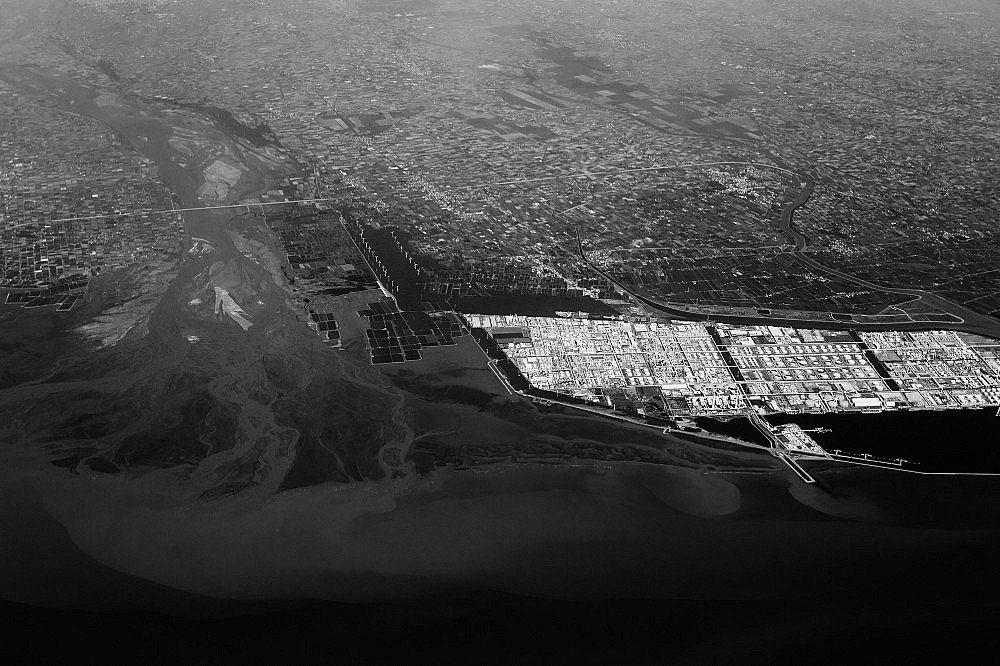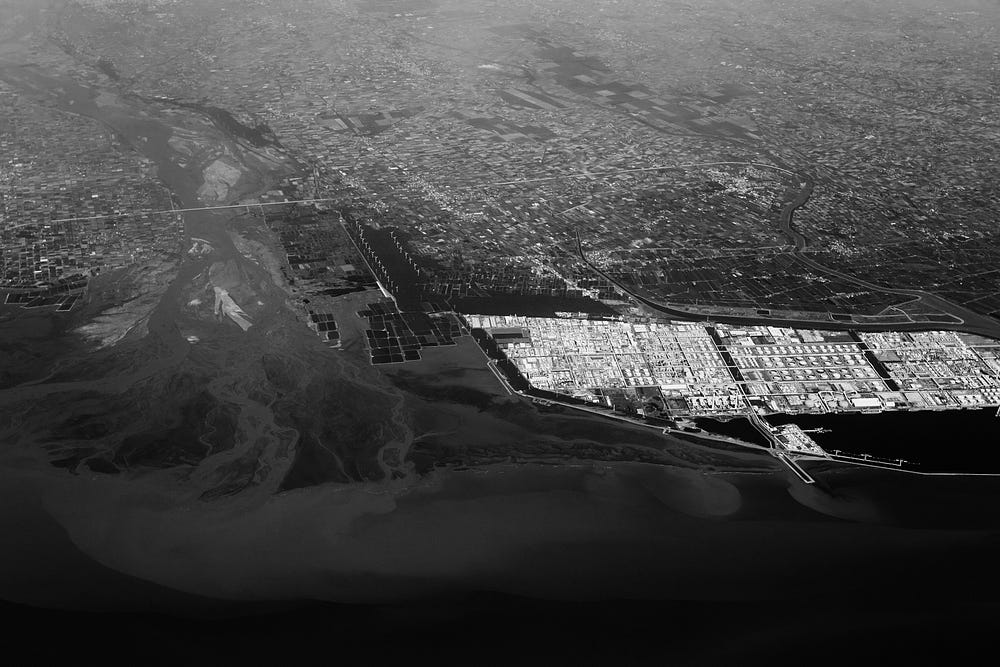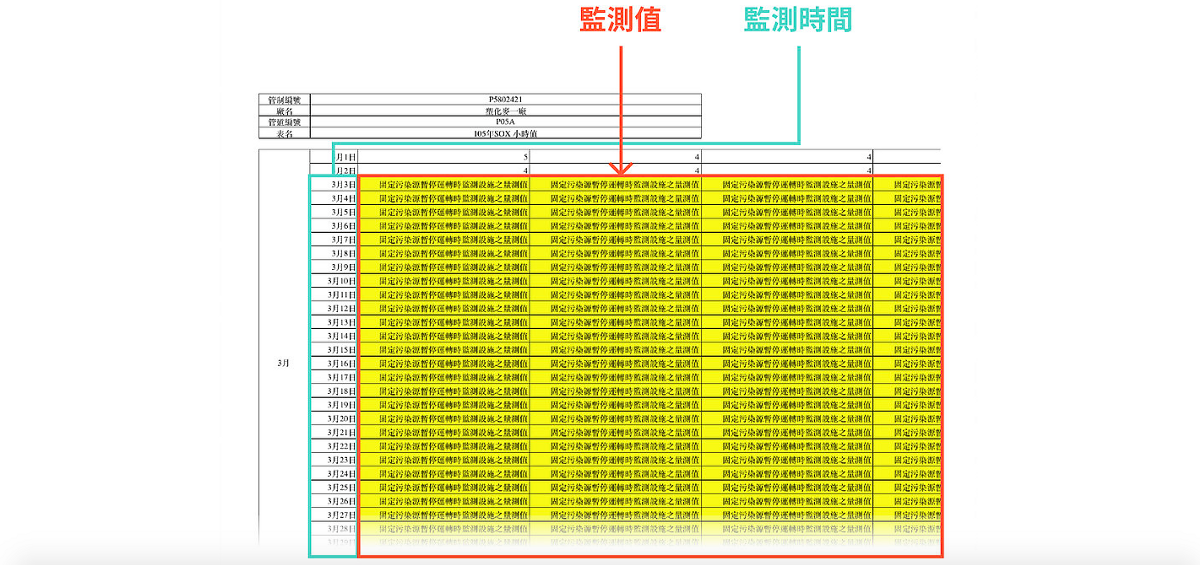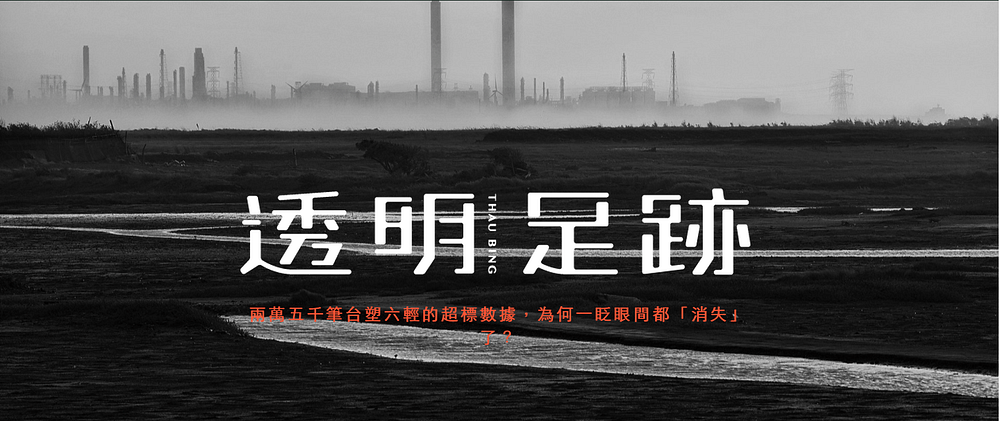
By collecting real-time pollution data, an environmental group discovered Taiwan's largest petrochemical plant exceeded the emissions quota for pollution over 25,000 times. The plant didn't pay a cent for it.
------------------------------------------------------------------------------------------------
Civicist FEB 24, 2017 BY: AARON WYTZE WILSON
Editor’s note: As efforts to “rescue” federal environmental data gain momentum in the U.S., it is possible to imagine a world in which these citizen-driven environmentalist gorups have to start collecting the data in the first place. With that in mind, here is a story about an environmental group in Taiwan using open data to expose excessive pollution by a petrochemical plant—and the government’s failure to fine the company for its infractions, originally published by g0v.news.
G0v.news (pronounced gov-zero news) is a news platform about the civic tech community, by the civic tech community, featuring the latest civic tech trends from Asia and around the world. G0v.news is also the world’s first ever bilingual Chinese/English civic tech news platform. Original reporting for this story was done by Chih-hsin Liu, with translation and additional reporting by Aaron Wytze.
When we see smoke rising from a factory, what kind of reaction are we supposed to have? How often do we think to ourselves, “I’m sure the government has it under control.”
Last July, a smoke stack at Taiwan’s largest petrochemical plant began to emit large amounts of black smoke.
Sensing something unusual, a driver passing by the plant called in to make an anonymous report about the smoke. Why they did so, could have been for a number of reasons. It could be that the rate of liver and lung cancer among nearby residents has skyrocketed since the plant went up. It could be that that the communities surrounding the plant have Taiwan’s highest recorded levels of PM2.5. Or they may have noticed the putrid smell. Or they may have heard about the dramatic fall of fish caught in the vicinity of the plant.
But the response from Taiwan’s Environmental Protection Administration (EPA), was not particularly reassuring: “Today’s output has not exceeded emissions standards.”
“We just thought it was really strange. The changes in the environment have been so evident,” said Tseng Hung-wen, a researcher for the Green Citizen’s Action Alliance (GCAA), an environmental advocacy group in Taiwan.
“So, why wasn’t the company fined?”
In response to the government’s lukewarm response to their concern, the GCAA decided to measure real-time data from the petrochemical plant for nearly a year.
The group wasn’t prepared for what they found in the data: over 25,000 instances of the plant exceeding gaseous pollutant and particulate pollutant emissions standards, with more than 250 instances where the government was supposed to levy fines for exceeding emissions standards.
But not a single fine was levied against the company. And when they compared their data findings to the EPA’s, they were shocked to find all instances of the plant exceeding emissions standards had disappeared.
Now the GCAA is demanding the Taiwan government open up more of its pollution-related data. In the meantime, the group is creating their own database, in a push to give open environmental data to the public.

The №6 Naphtha Cracker Complex in Mailiao Township, Yunlin County, Taiwan. The massive complex is built on reclaimed land in the Taiwan Strait, and combines an oil refinery, an ethylene cracker, and port facilities. Photo courtesy of Edd Jhong.
The petrochemical plant at the center of controversy, is the №6 Naphtha Cracker Complex located in rural Yunlin, one of Taiwan’s least developed counties. The massive complex is built on reclaimed land in the Taiwan Strait. The complex combines a host of facilities. It has a coal-fired power plant. An oil refinery. A naphtha cracking plant. It even has its own port.
The complex is the crown jewel of the Formosa Plastics Group (FPG), one of the globe’s largest chemical producers. FPG petrochemical plants can be found around the world, from Hanoi, Vietnam to Baton Rouge, Louisiana.

The №6 Naphtha Cracker Plant has seen frequent protests from Yunlin and Changhua County residents over the years. Photo courtesy of Edd Jhong.
The №6 Naptha Cracker Complex refines and produces a number of petrochemicals, from crude oil to ethylene, from propylene to benzene. FPG estimates it produces nearly three million tons of ethylene per year. The complex’s nearly 400 smoke stacks are constantly pumping out large quantities sulfur and nitrogen dioxides, and high densities of PM2.5.
Health problems and mortality rates in Yunlin and neighboring Changhua county have subsequently been on the rise. Communities living within 10 kilometres of the complex have suffered the worst. Chan Chang-chuan, a professor of occupational medicine and industrial hygiene at National Taiwan University, says cancer rates have quadrupled for local residents in a decade’s time. Occurrences of allergies among local children has skyrocketed. Growing air pollution in Central and Southern Taiwan led to a rise in lung disease nationally, last year.
In Yunlin County, a school was relocated because students were showing high levels of thiodiglycolic acid (TdGA) in their urine, an indicator that they had exposure to carcinogens from the complex. High TdGA levels lead to liver failure. Teenagers as young as 19 with no family history of liver disease have died from liver cancer in the region.

Chen Chin-fung lived in the vicinity of the №6 Naphtha Cracker Complex. Her husband died at age 59 of mouth and lung cancer, despite never smoking, drinking, or chewing betelnut. Photo courtesy of Edd Jhong
FPG has denied any connection between the complex and the health woes of the local people. It blamed the rise of PM2.5 on farmers burning agricultural waste. It blamed the student’s high level of TdGA on second-hand smoke. Meanwhile, FPG is reaping massive earnings. The company reported net profits growing by 46.8 percent from last year, with a combined net income reaching $207.7 billion NTD (or $6.5 billion USD).
Civic groups like the GCAA have accused the local and federal governments of negligence and shadowy interactions with FPG. The Yunlin County has seen a number of protests over the past decade, and has been accused of opaque, closed-door dealings with the FPG. The local government has continually re-issued permits for the complex despite the local people’s dramatic rise in health problems. The government has also been accused of not being diligent enough in verifying FPG’s data, taking the company’s numbers at face value.
The locals had had enough. Receiving a local tip from an Yunlin resident, the GCAA began to record the complex’s real-time emissions data themselves.
FPG is required by the Taiwan government to make environmental reports regarding its pollution output. The complex has a total of 398 smokestacks, with 34 of them monitored through an emissions management system called CEMS. The data collected from CEMS is sent directly to Taiwan’s EPA, where a monthly report is made. The Yunlin County government also uses CEMS to provide real-time monitoring data of plant emissions on its website.
Over the past eleven months, the GCAA downloaded all real-time data from the Yunlin County website, and compiled it into spreadsheets.
The GCAA recorded 25,211 instances where the complex exceeded the allowed pollution emission standards; that includes 18,949 instances of excessive gaseous pollutants, such as sulphur dioxide, hydrogen chloride and carbon monoxide, and 6,262 instances of excessive particulate matters, such as PM10 and PM2.5.
The GCAA has identified 262 instances where FPG should have been fined for excessive pollutants, according to standards set by Taiwan’s EPA. But over the 11-month period GCAA recorded real-time data from the complex, there was no news of fines levied against FPG for breaking the law.
Seeing that the complex was consistently exceeding emissions standards, but wasn’t being fined, the group asked Lin Shu-fen, a legislator with the ruling Democratic Progressive Party to help them retrieve the EPA’s version of the complex’s emission records.

Chart 1: Real-time emissions recordings from the №6 Naphtha Cracker Complex. The middle orange column shows readings when the complex exceeded the legal emissions output. The left green column shows the legal threshold allowed. From the Thaubing Footprint Project website.
But the group was shocked to discover that the 25,211 instances of the complex exceeding pollution outputs had been almost entirely wiped clean. Taiwan’s EPA allows FPG to review the data collected from CEMS before submitting it. FPG ostensibly does this in order to make sure there are no irregularities in the data collected by CEMS.
However, in the EPA records obtained by the GCAA, the company has conveniently found discrepancies in every instance it has exceeded the emissions output. Thus, the EPA’s records do not show any violations, only mentions of “ineffective data,” or “monitoring equipment under repair,” or “survey instrument temporarily stopped recording” and “invalid measurements.”
Effectively, the EPA has never had correct data records of the №6 Naphtha Cracker’s emissions output, because FPG alters the records before submitting them.

Chart 2: FPG’s revised data readings provided to Taiwan’s EPA. The dates listed in this chart correspond to the dates listed in Chart 1. In each case where №6 Naphtha Cracker Complex exceeded the allowed threshold, it revised the data, to show: “monitoring equipment temporarily suspended when pollution source is stationary.” Subsequently, FPG was not fined in any of the instances the complex exceeded pollution outputs. From the Thaubing Footprint Project website.
Subsequently, FPG was not fined in 2016 for any of the instances it exceeded the legally allowed emissions output. Only a single pollution fine had been levied against the complex over the past year. A $100,000 New Taiwan dollar fine, the equivalent of $3,100 US dollars.
In response to the GCAA’s discovery, the EPA has promised to check emissions data from the complex over the past two years, and has set up an ad hoc group to further investigate.
But in an interview with Taiwan’s United Daily News (UDN), an official from Yunlin County’s Environmental Protection Department said that a lack of manpower and a massive number of smoke stacks at the №6 Naphtha Cracker Complex will make it difficult to check every piece of information showing an infraction.
UDN also reported that this wasn’t the first time FPG covered up emissions related data. In 2013, the company’s Nan Ya plant in New Taipei City created false emissions data, resulting in a $250 million NTD fine against FPG (about $8.1 million USD).
But revealing the disappearance of 25,000 data records is only the first step for the GCAA. The group is fundraising to set up a larger pollution-related database that is able to expose factories and plants in Taiwan that consistently exceed pollution emission standards.
They call the plan, the “Thaubing Footprint Project.” Thaubing being the Taiwanese Hokkien language word for “transparency”.
“Our biggest hope is that we can expose pollution made by companies, and allow everyone to even share that information on social media,” said Tseng.

The front page for the Thaubing Footprint Project.
The Thaubing Footprint database will eventually cover all 107 companies in Taiwan that are monitored for pollution emissions. Of these companies, 316 chimneys or smokestacks have monitoring equipment installed to measure emissions (which also includes the №6 Naphtha Cracker Complex’s 34 monitored smoke stacks).
The GCAA hopes that by creating this database, they can also push the government to release more comprehensive environment-related data to the public.
Although Taiwan recently ranked “number one” in the Global Open Data Index, the government has been slow to improve environmental data quality. “In the beginning, they would only release ‘convenient’ data,” said Tseng, often the data was insufficient, or in a format that wasn’t usable or readable.
In the future, the group will use the Thaubing Footprint Project database to inform the public about air and water pollution problems in real-time, use data visualization to help people understand the severity of the problem, and share said information on social media. The GCAA hopes their project can be made into an app, and are currently fundraising to complete it.
Although the government monitors over 100 companies for emissions data, the GCAA has identified 9,000 more companies that require it. The government’s response to the low level of monitoring at facilities is: “limited funding” or “insufficient monitoring equipment and personnel to analyze the data.”
But the GCAA sees smaller improvements that can be made. “The most basic thing the government can actually do, is to improve the quality of the data. If the most critical data is released, we would be able to at least relax a little,” said Tseng.
For the residents who live near the №6 Naphtha Cracker Complex, the massive differences between the EPA’s data and the data collected by the GCAA has only added to their distrust of FPG, and the local and central governments.
“In the past, oversight mechanisms were in the hands of the government. But people are unsatisfied with the current state of the environment, and don’t know what to do.” said Tseng. “After opening up the data, we can empower the local community to know more, and take collective action.”
Whether it’s reporting, supervising, or encouraging companies to be more environmentally-friendly, the GCAA believes Taiwan can benefit from open environmental data.
The “Thaubing Footprint Project”, an 11-month experiment in real-time data collection by the Green Citizen’s Action Alliance, can be found here.
Photos courtesy of Edd Jhong (鐘聖雄), from his series of photos titled: Nanfeng (南風).
Jason Chih-hsin Liu is an accredited journalist who has worked for a number of Taiwan media groups. His work has been featured in Taiwan’s Business Weekly, and the Financial Times, where he’s written about civic tech, the tech industry, and other international reports.
Aaron Wytze Wilson is a Taiwan-based journalist who reports on the intersection of government and tech in Asia.
BY: AARON WYTZE WILSON FEB 24, 2017